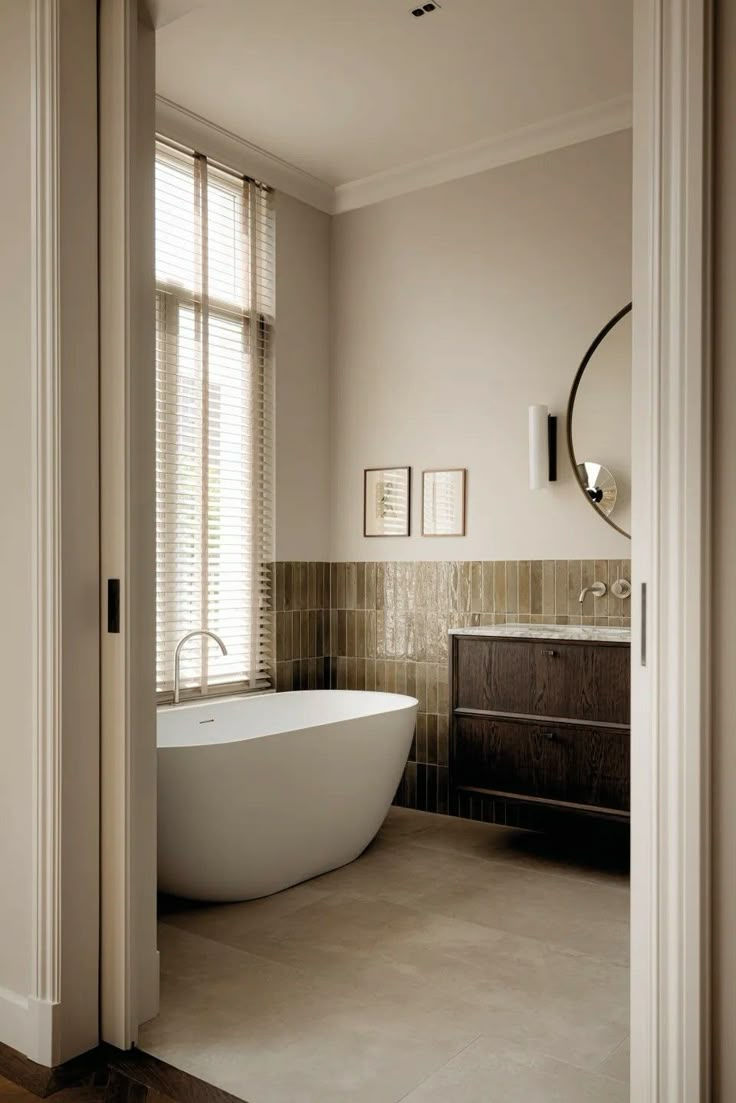4 granite worktop myths debunked
- Jenny Kakoudakis

- Nov 2, 2019
- 4 min read
Updated: Apr 1, 2024
Granite is highly prized for its stunning looks and practical properties that make this natural stone surface a firm favourite for kitchen worktops everywhere.
Created from interlocking mineral crystals, granite is a naturally occurring stone formed over millions of years in the earth’s crust. And with such a wide choice of outstanding colours and unique patterns available, what better way to add a touch of luxury to personalise your kitchen?
But how much do you really understand about granite?
There are a few misconceptions out there that may make you hesitate to choose this type of worktop surface for your kitchen. Let’s take a closer look to see if we can shed some light.

Above and below: A design by Atelier daaa in Montmorency, using Dekton's Aura 15 surfaces.

Myth 1: Granite is expensive to buy
While a high price can be a powerful demotivator, the perception of what qualifies as expensive is completely subjective. If you are looking at the price of a superior quality natural stone surface against cheap, mass produced laminate worktops, for instance, then of course the former will cost you more. But aren’t you comparing apples and pears?
Generally speaking, granite pricing is on a par with similar stone options. In fact, when you consider the popularity of this material and the abundant supply of it in the marketplace, prices are actually very competitive.
Granite can vary in price depending on the demand for certain colours or patterns, while the quality of the stone itself is classified into three grades:
First Grade (premium quality, no visible imperfections, symmetrical patterns, rare colours)
Commercial Grade; and
Second Grade.
And if granite does seem expensive to buy, don’t forget that you are investing into one of the most durable worktop surfaces which, if cared for properly, should last for decades.

Above: Silestone Kitchen worktop in Urban Frost; below, granite tops from Granite Tops UK
Myth 2: Granite is difficult to look after
Unlike laminate worktops or composite materials, all natural stone products are porous to a greater or lesser extent because of their granular construction.
Granite has a low porosity, meaning it needs to be sealed before use as a kitchen worktop. The sealant penetrates the surface and fills the microscopic voids between the crystals, thereby eliminating the risk of the stone absorbing liquids and providing stain and bacterial resistance.
Most suppliers will deliver your granite worktop either pre-sealed, or apply a proprietary sealant during installation, so you don’t have to worry. Once sealed, granite delivers a waterproof, stain and scratch resistant surface that is as practical as it is beautiful.
What’s more, your granite worktop will be a doddle to look after, requiring nothing more than ordinary soap and warm water for regular cleaning.
One specialist supplier recommends:
“On a day- to-day basis natural granite and marble worktops simply require a wipe down with a soft cloth soaked in soap (or neutral detergent) and warm water to maintain its natural beauty and shine. We recommend then buffing dry using a soft, clean e-cloth or kitchen roll,” say Chandler Stoneworks.
And if you’re worried about having to reseal your worktop, don’t fret. This shouldn’t need doing more than once every one or two years, if at all. Check to see whether water fails to bead when splashed on the surface of your worktop and use the stone care kit that your supplier will have given you at installation.
Below: Kitchen worktops from Caesarstone
Myth 3: Granite is impossible to damage
Granite is often described as the second hardest natural material, after diamond. As such, it may well be the last worktop you’ll ever need and may even outlive your house!
As one of the hardest kitchen worktop materials available, it is resistant to chemicals, heat, stains and scratching, chipping and cracking. As durability and robustness goes, you’ll be hard pressed to do better. But that doesn’t mean you can’t damage granite.
While it is difficult to stain granite, it is possible – beetroot, wine and cooking oil being one of the main culprits.
Lighter coloured granite surfaces are more at risk than darker worktops. Mostly, annual sealing will prevent spilled foods and liquids causing staining, but if the worst should happen, rest assured that the damage can in all likelihood be undone with an application of a simple home-made poultice that you can find here.
Here’s how it works:
And while granite is scratch resistant, be careful with abrasive chemical cleaners that can cause tiny scratches on the surface of your granite and will dull and break down the sealant with frequent use. Stay clear of acidic cleaners like vinegar or lemon, and avoid anything with ammonia or bleach.
Myth 4: Granite and marble worktops are the same
While granite and marble are both natural stones and can look similar, they are in fact very different materials.
Granite is an igneous rock, meaning it was once molten and formed as it cooled deep within the earth’s crust. Minerals within usually appear as small flecks through the stone. Marble, by contrast, is a metamorphic rock. Once limestone, it changed due to intense heat and pressure that altered its crystalline structure and introduced other minerals by way of its characteristic veining.
Both granite and marble are hard natural stones that come in an array of unique colours and patterns. They’re relatively heat and scorch proof, and both need sealing. Marble is softer and more porous than granite, which makes it less practical in the kitchen, though its cooler surface temperature makes it a favourite for pastry bakers.
With marble, a regular resealing schedule (twice a year is recommended) is important to keep staining at bay while great care must be taken not to damage the surface with harsh cleaning products. Granite, on the other hand, is more forgiving and arguably the more user friendly choice.

Jenny Kakoudakis likes to blog about interiors. She launched award-winning Seasons in Colour in 2014. When she is not chasing criminals out of the financial system (her day job), she gets creative by redecorating her own home.
Download her free bathroom renovation guide here.


























